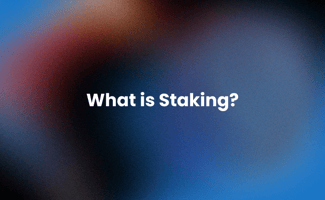While the DeFi landscape is continuously changing, Ethereum staking remains a cornerstone. However,...
Liquid Staking: How to Stake with Lido
Lido is the leading liquid staking protocol that enables any holder of ETH to stake without the traditional lockup required for Ethereum validators. Since Ethereum’s merge to Proof-of-Stake on September 15, 2022, the mechanisms for securing consensus and earning rewards for that security shifted from mining to staking. Traditionally, to earn rewards or yield on Ether, one would need to accumulate 32 ETH, and then deposit that Ether into a 24/7 operating validator. While the upcoming Pectra upgrade would increase the validator staking limits to 2048, it would not decrease the limits.
Stakers with 32 ETH or more can go to Validation Cloud’s staking interface and commit their stake in a few easy clicks. However, that amount of Ether is not attainable for many Ethereum holders.
Enter Liquid Staking
Liquid staking is the concept of depositing a native token that gets locked up and staked into a protocol, in exchange for a “liquid” form of that token which is not subject to any lockups. In the Lido ecosystem of Ethereum, any amount of Ether can get swapped 1:1 with a liquid staking token (“LST”). The LST for Lido is “stETH,” and this token can be simply held in a wallet, or deposited into other protocols such as EigenLayer for a chance to earn further additional yields via pooled security. Our guide on how to commit your liquid staking tokens into EigenLayer can be found here.
These tokens typically earn an autonomous yield similar to what one would earn through traditional Ethereum staking, minus a small commission that goes to operators.
Lido is one of multiple liquid staking solutions available to users – although it is the largest by a significant margin as of today.
High-level overview of Lido’s architecture, from “Lido Explained, Part 1: History & Architecture”
How to Stake on Lido
Step 0: Load Wallet and Fund it with ETH
This tutorial assumes that you already have a browser wallet installed. If not, some examples of wallets that can be easily downloaded are here:
- MetaMask
- Coinbase Wallet Extension
- Brave Wallet
- Leder Hardware Wallet (Can be plugged into most browser wallets)
Once the wallet is loaded and installed, ensure that it is funded with any amount of Ethereum you would like to stake.
Most wallets already connect you to Ethereum mainnet by default. However In the event your wallet is not already connected to Ethereum Mainnet, you’ll want to add the following configuration to your wallet connection details:
Network name: Ethereum Mainnet
Network URL: https://ethereum-rpc.publicnode.com
Chain ID: 1
Currency symbol: ETH
Block explorer URL: etherscan.io
Step 1: Navigate to Lido’s Staking Interface and Connect your Funded Wallet
Go to https://stake.lido.fi/ to be brought to the “Stake Ether” interface. Click on the “Connect Wallet” button at the top right of the screen.
Step 2: Set Desired Amount of Staked Ether and Press the “Stake” button
This can be any amount of Ether that you have. The corresponding transaction costs and fees are outlined in the description. It also includes the amount of stETH tokens that you will receive.
The positions can be withdrawn at any time as well. Simply submit a request to withdraw via the above interface, and you will be able to gain back your native Ethereum that you originally deposited in exchange for the stETH tokens supplied. Note that a minimum of 100 wei and a maximum of 1,000 stETH can be withdrawn from the protocol at a time. Depending on the amounts withdrawn, the withdrawal period can range from a few minutes to approximately one day (depending on the exit queue for Ethereum which can be found here).
Step 3: Manage the Position
You can manage your position at any time by navigating to https://stake.lido.fi/rewards and connecting the same wallet that you had used initially to hold the stETH tokens. You can review approximate earnings, claim rewards, and withdraw or add additional stake at any time.
About Validation Cloud
Validation Cloud is a Web3 data streaming and infrastructure company that connects organizations into Web3 through a fast, scalable, and intelligent platform. Headquartered in Zug, Switzerland, Validation Cloud offers highly performant and customizable products in staking, node, and data-as-a-service. Learn more at Validationcloud.io | LinkedIn | X


.png?height=200&name=From%20Staking%20to%20Earning_%20Leverage%20Validation%20Cloud%20for%20EtherFis%20Liquid%20Restaking%20(1).png)

